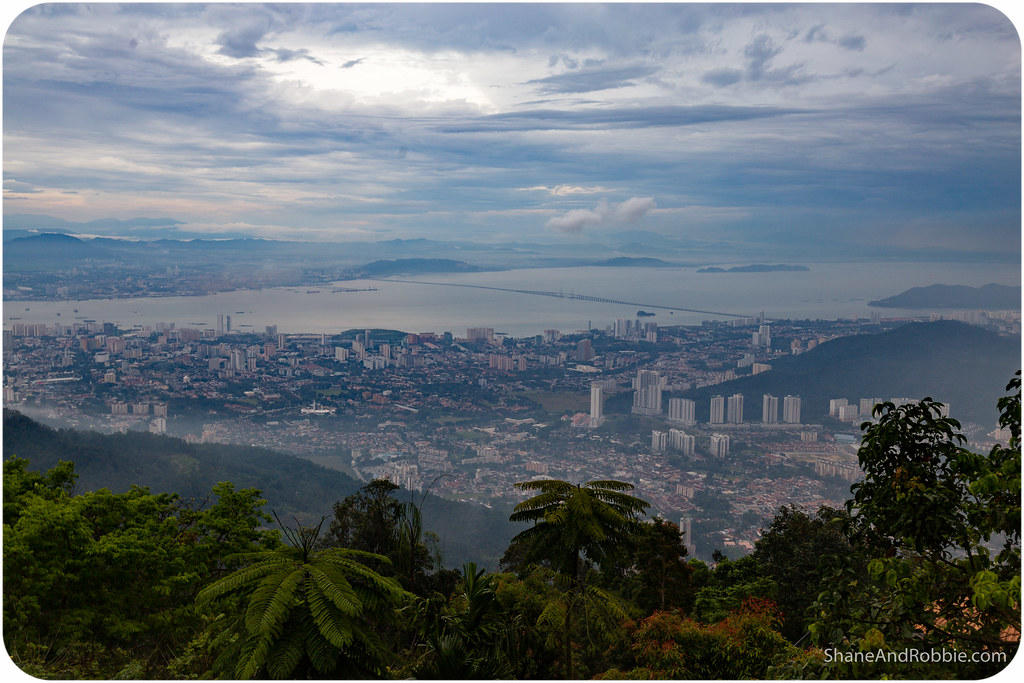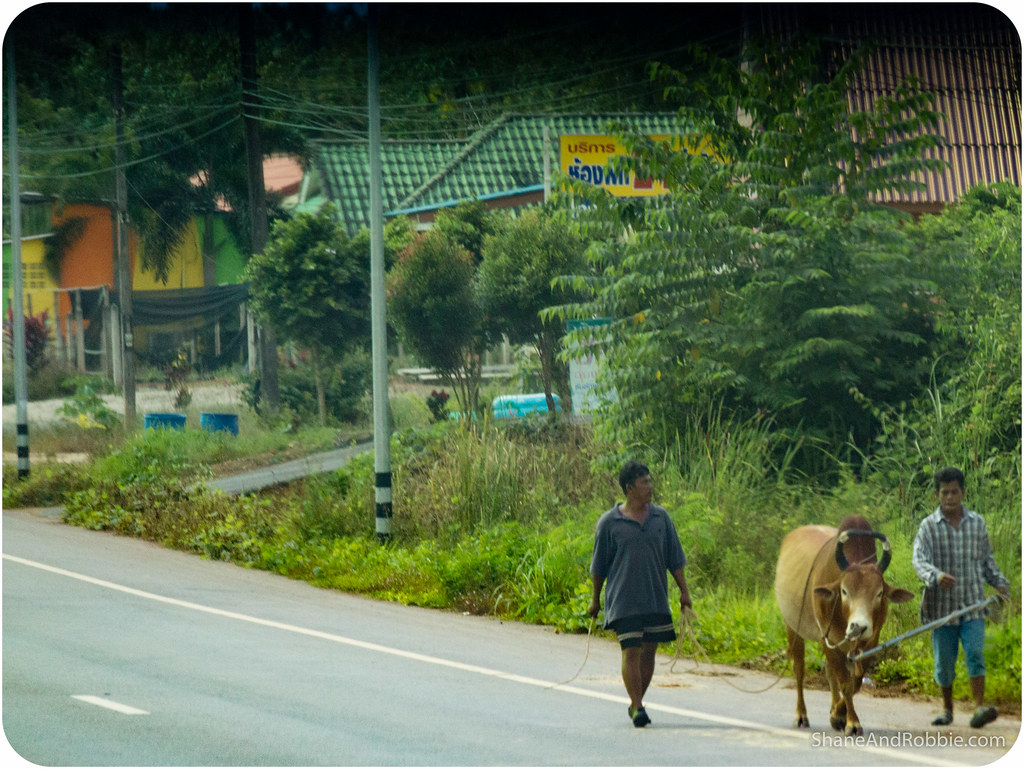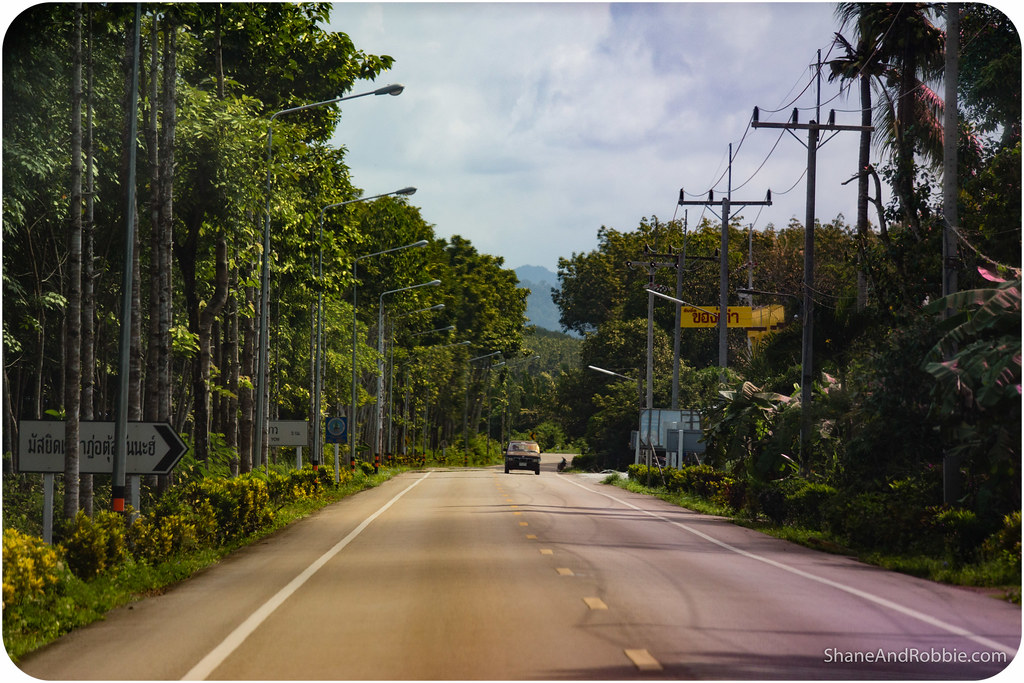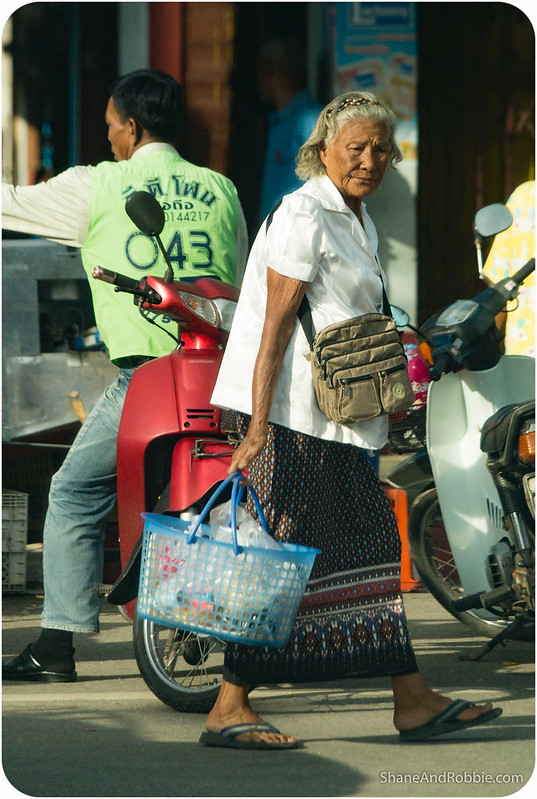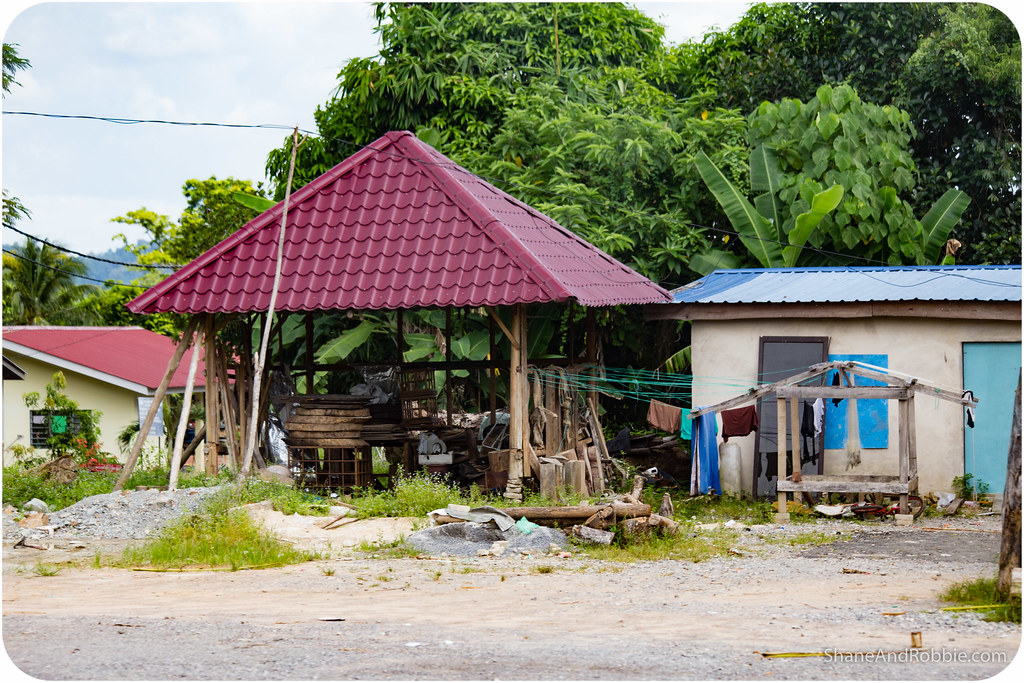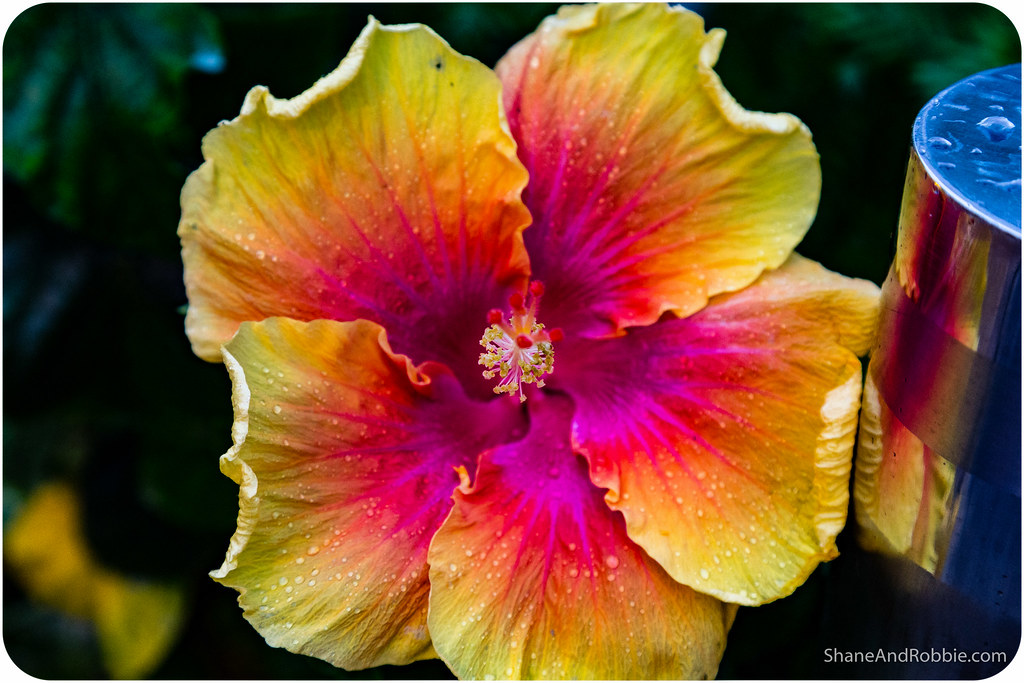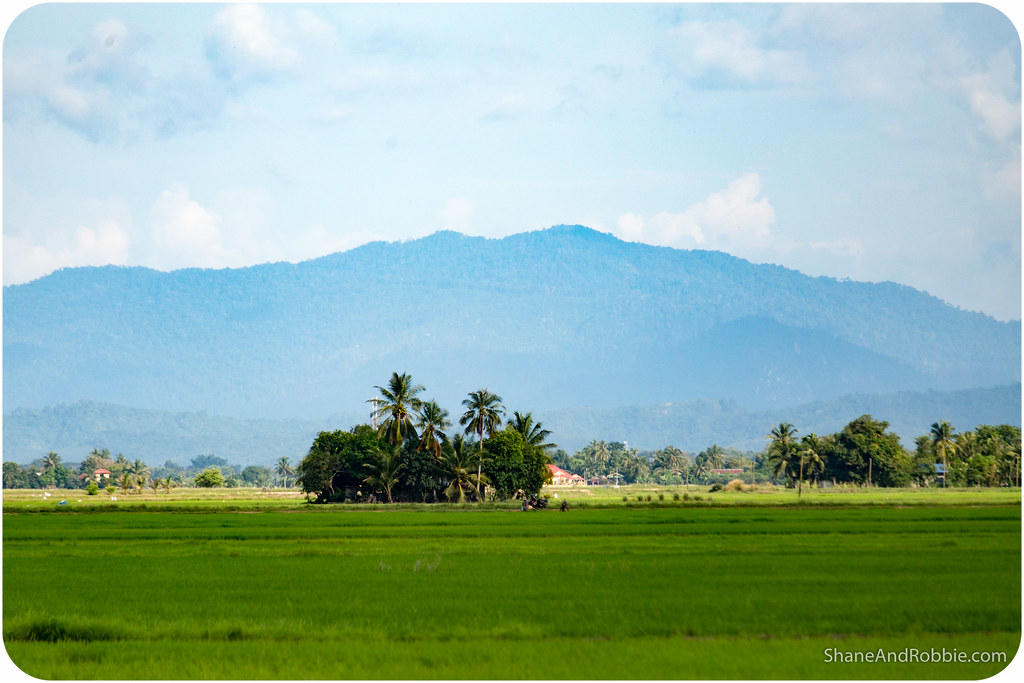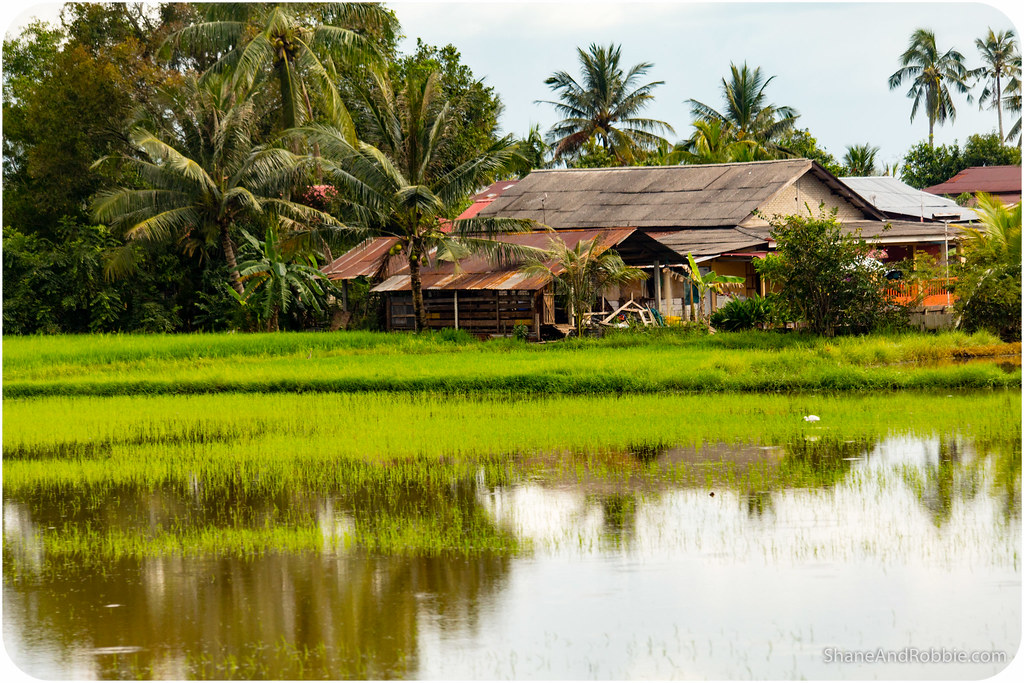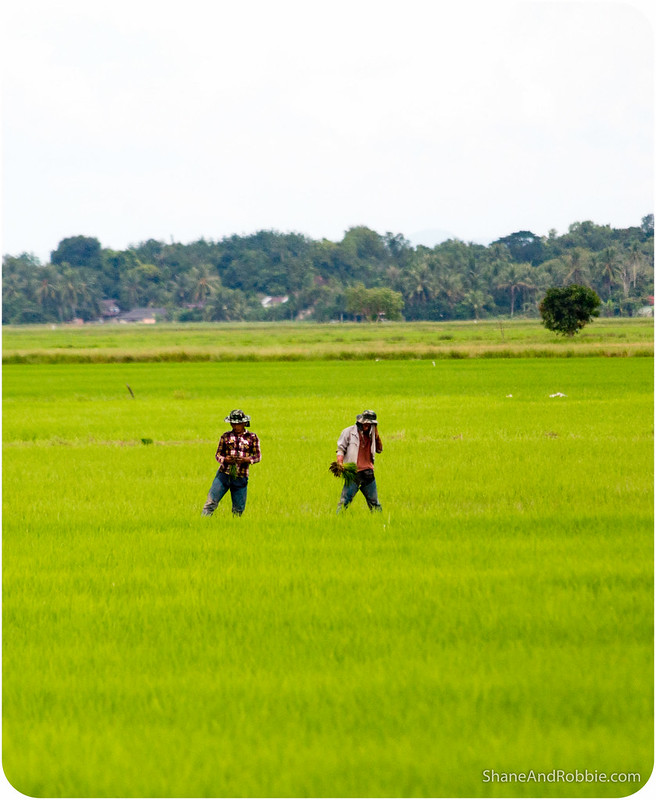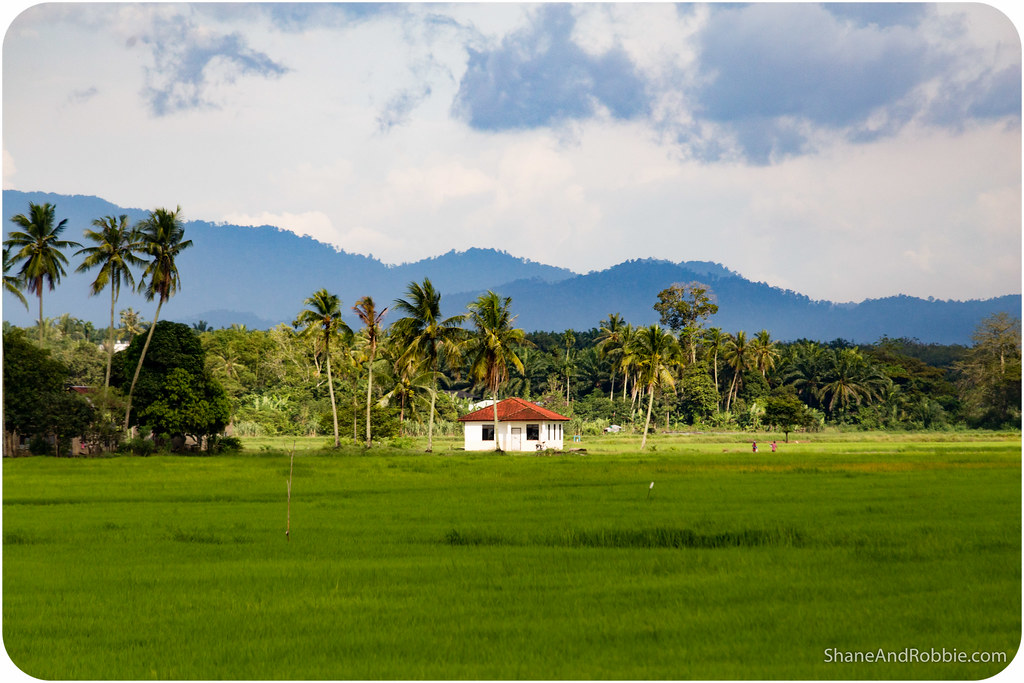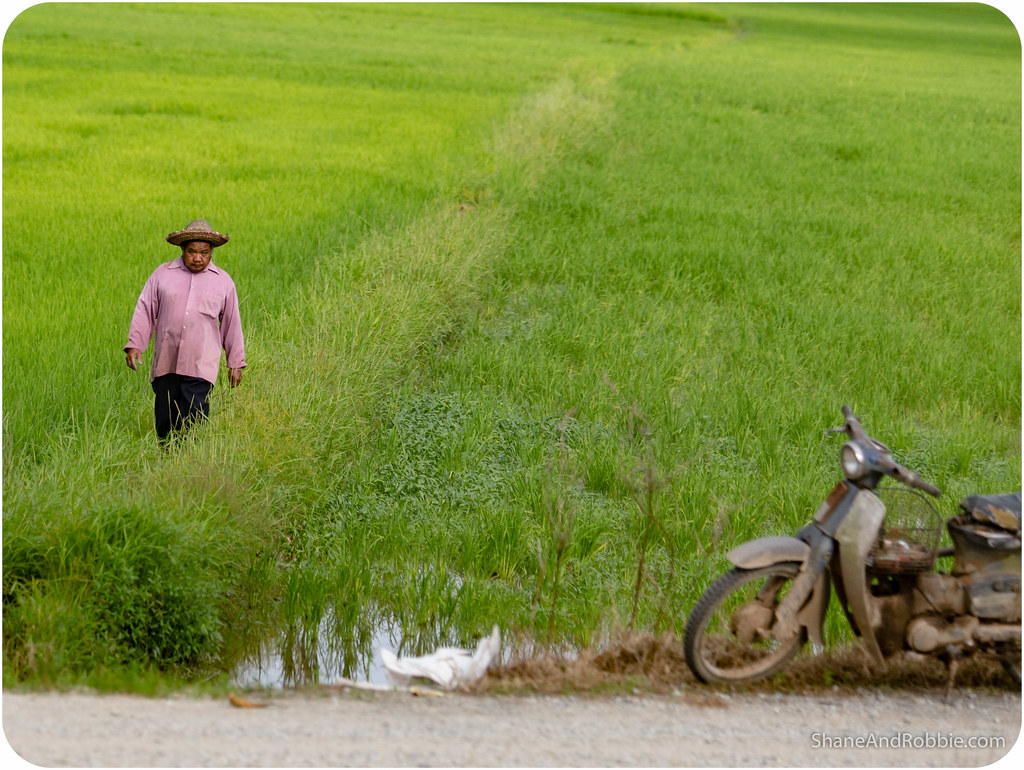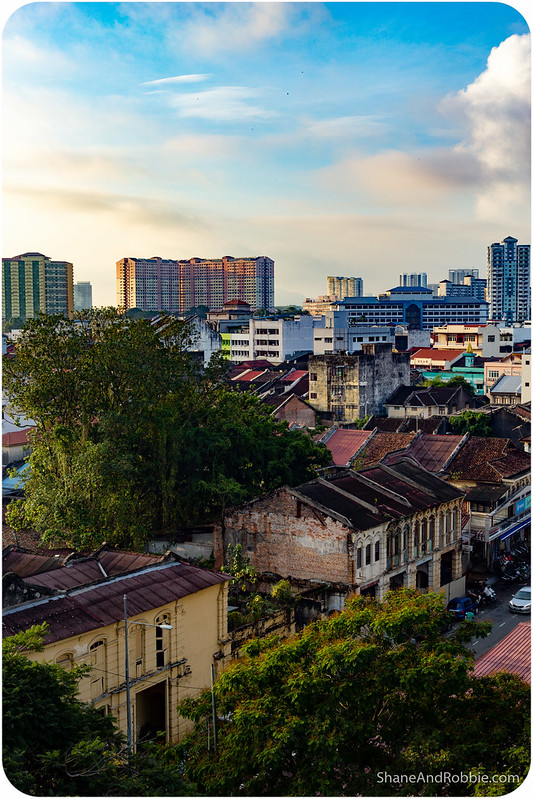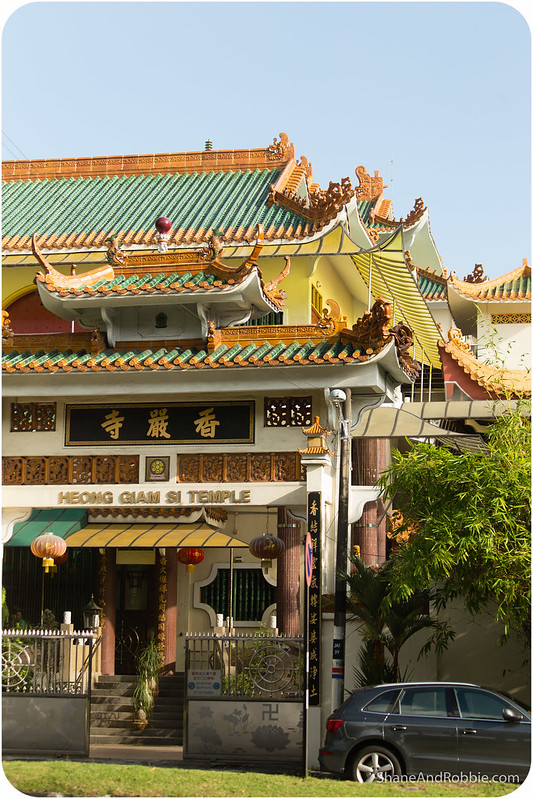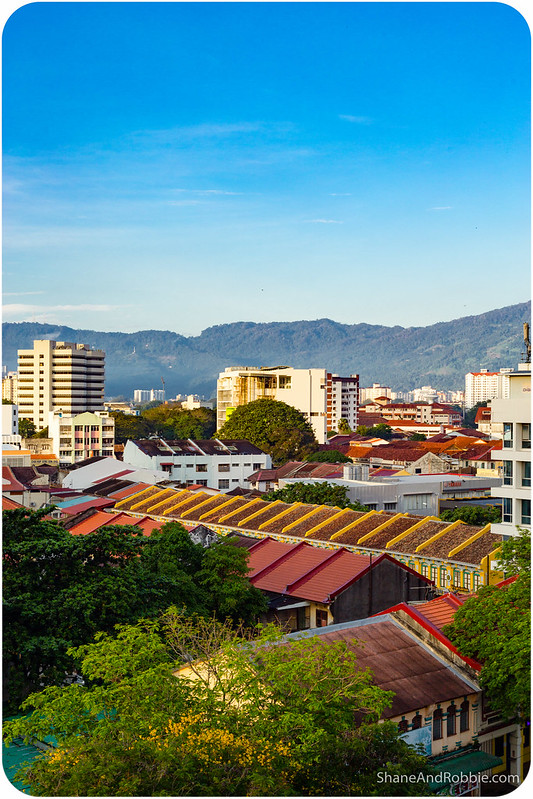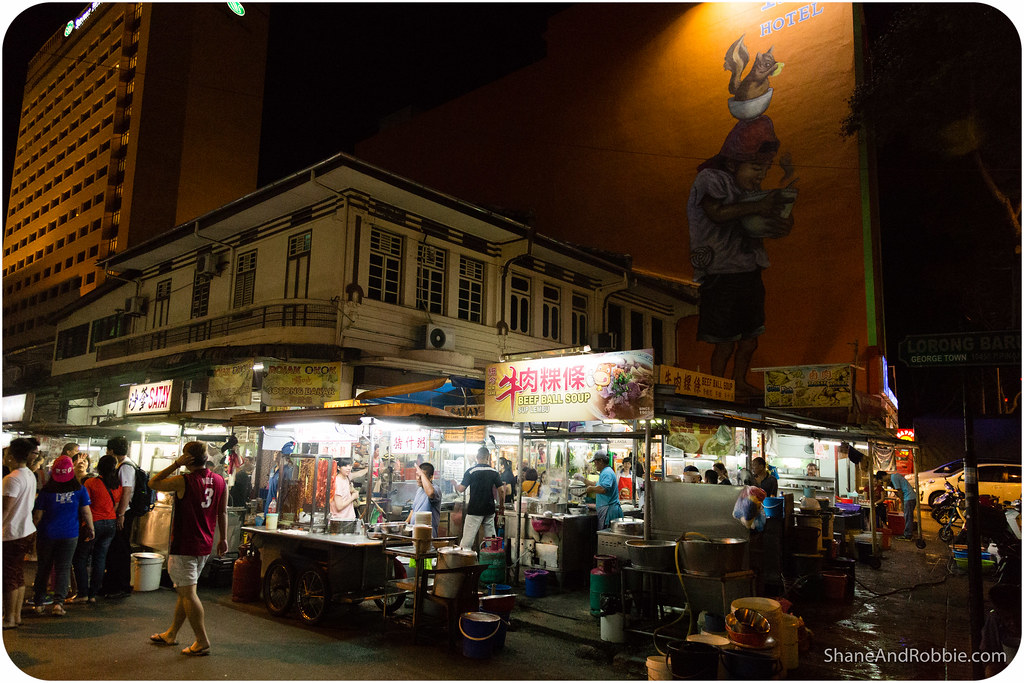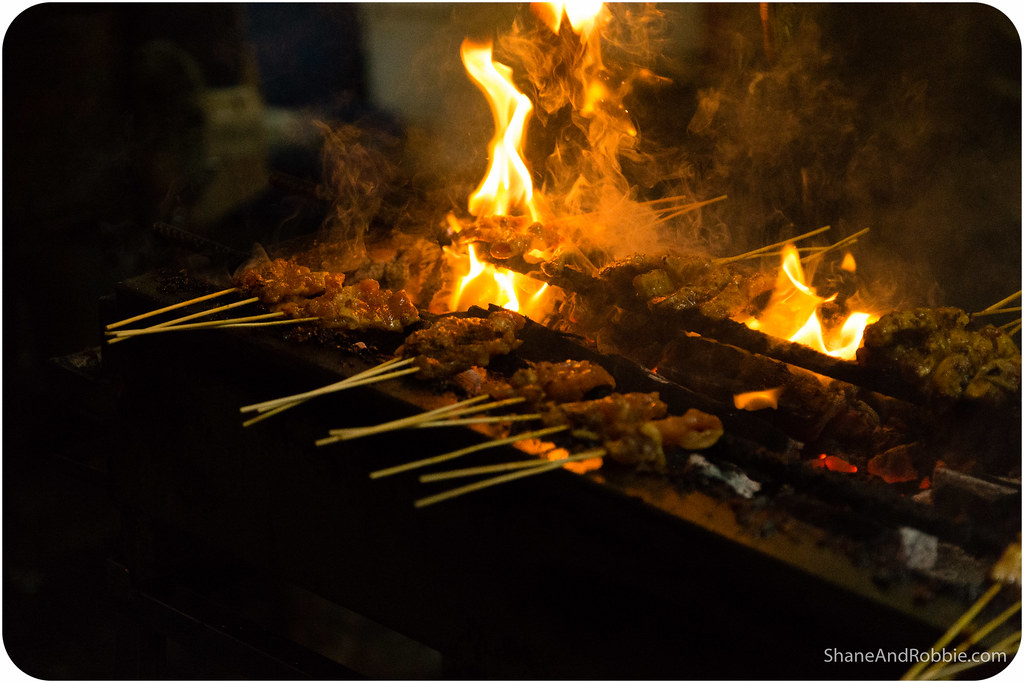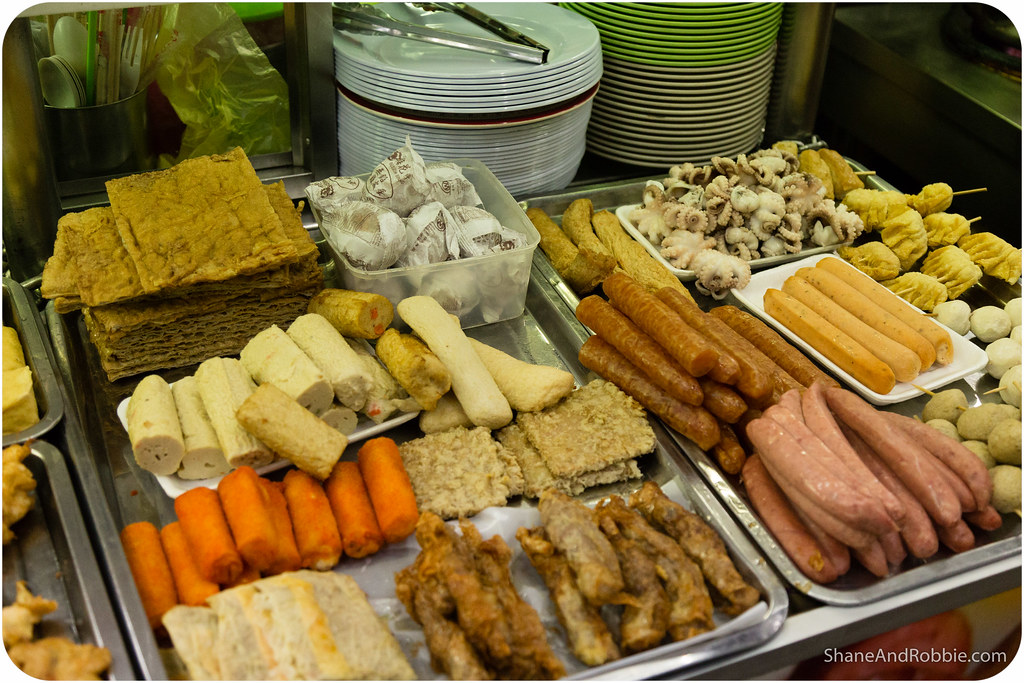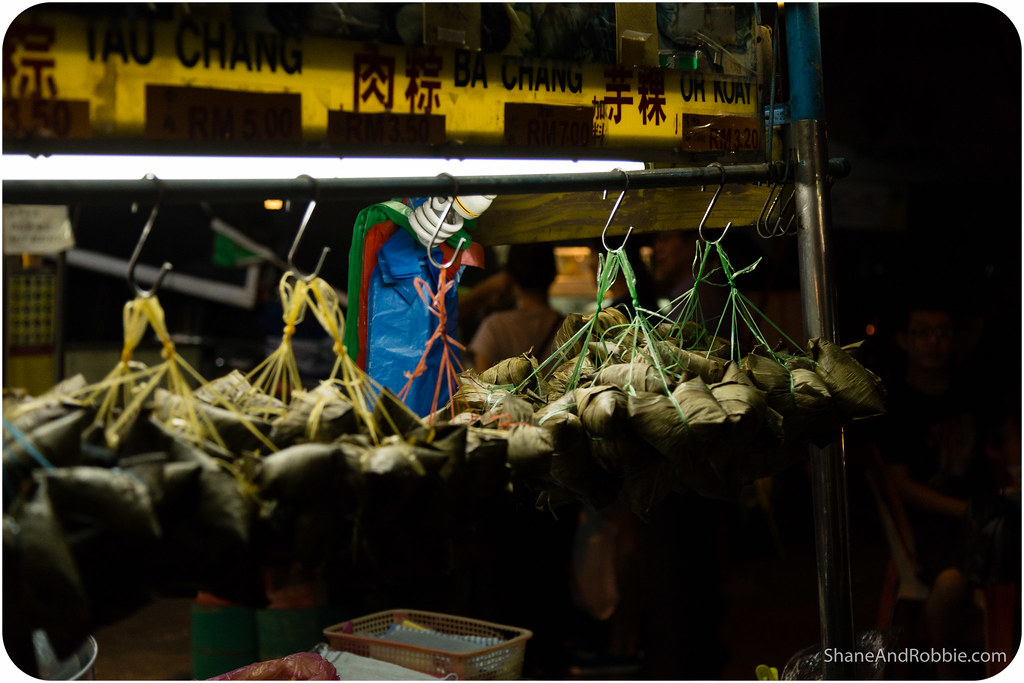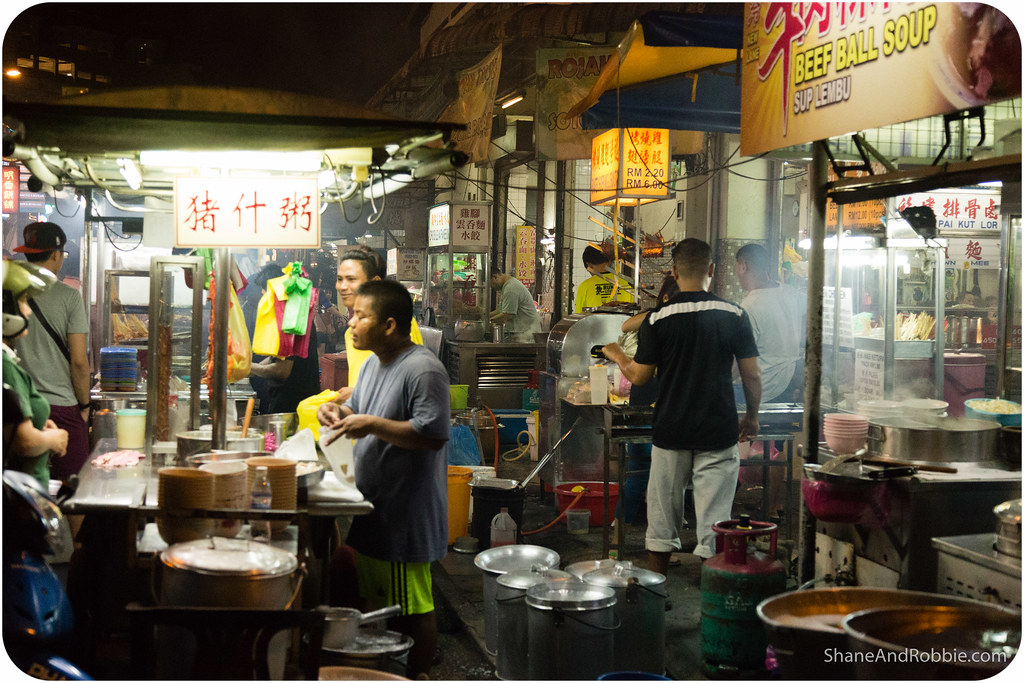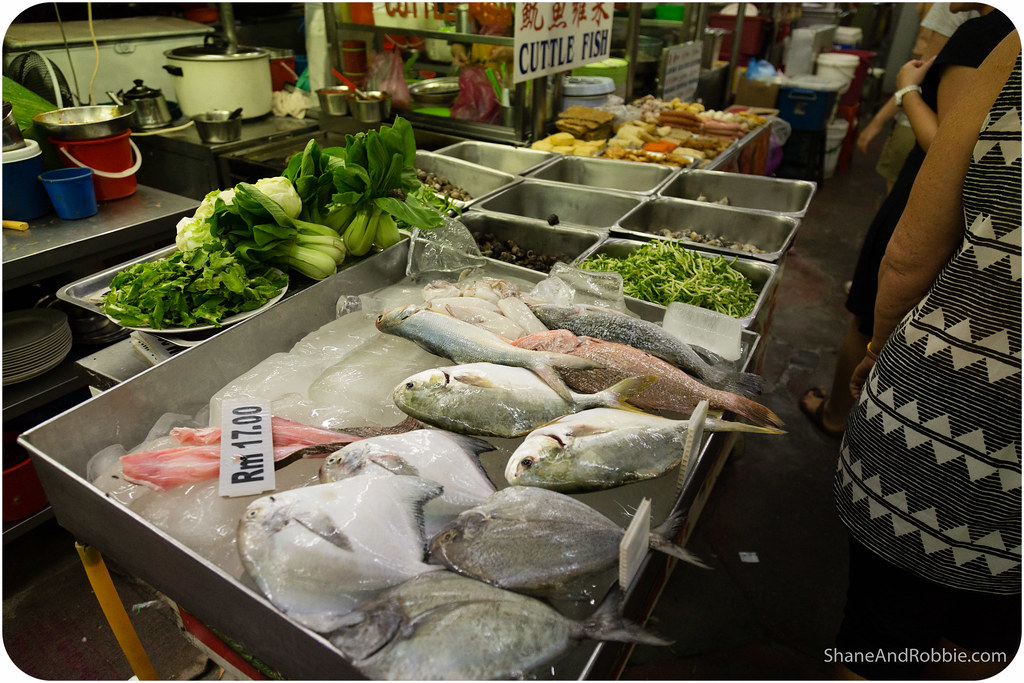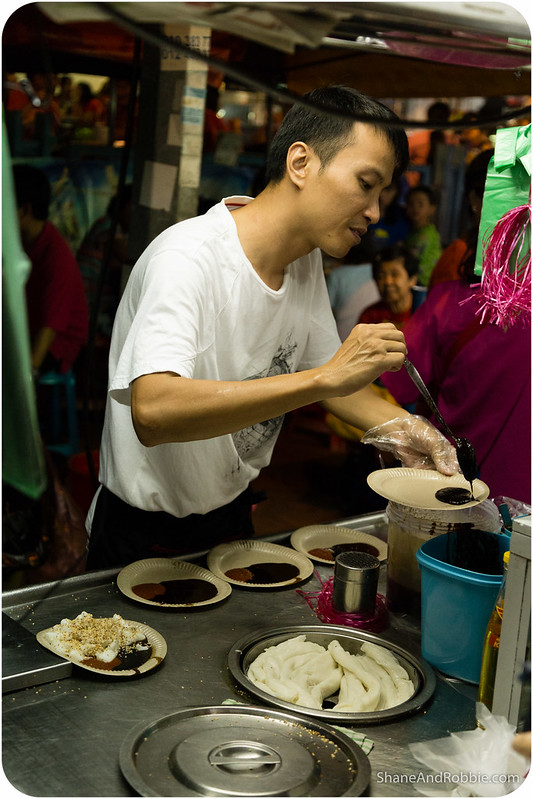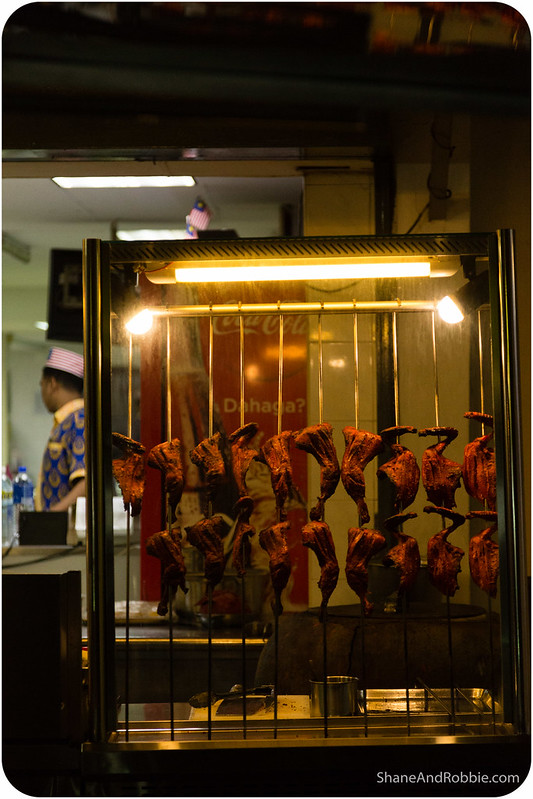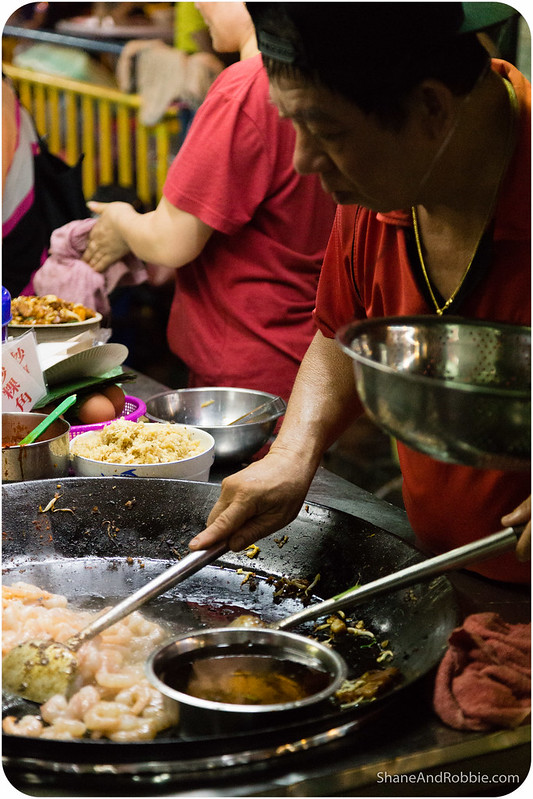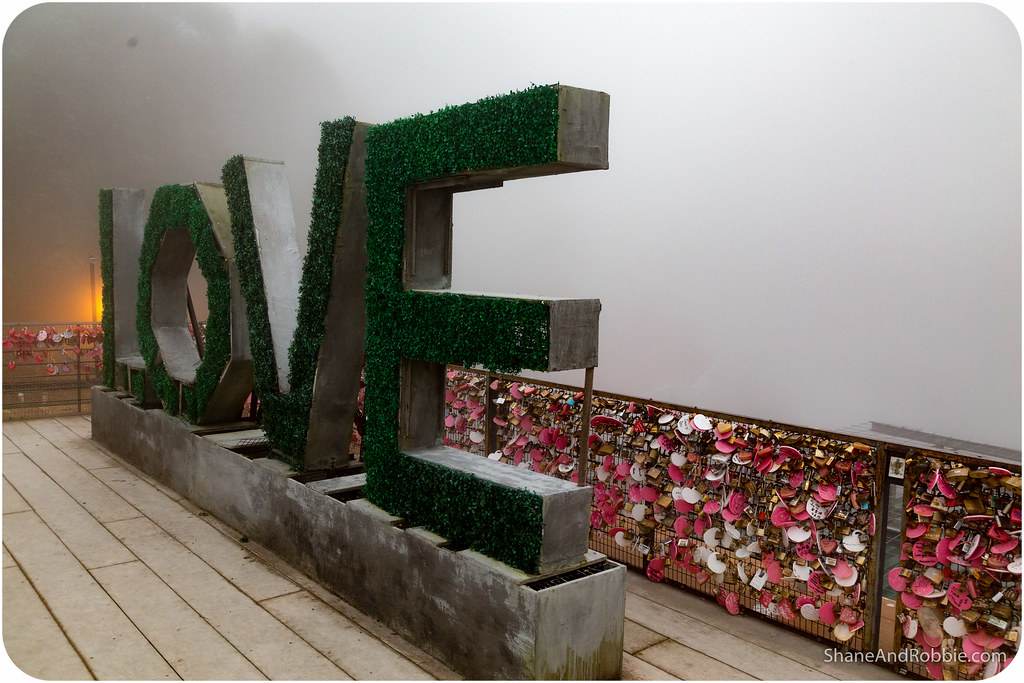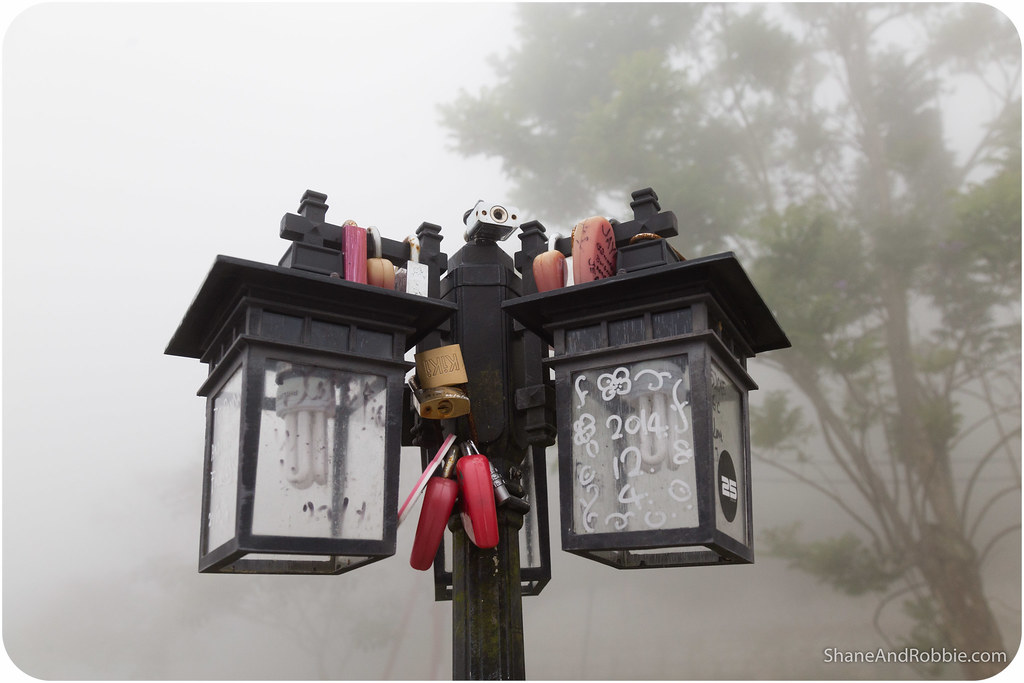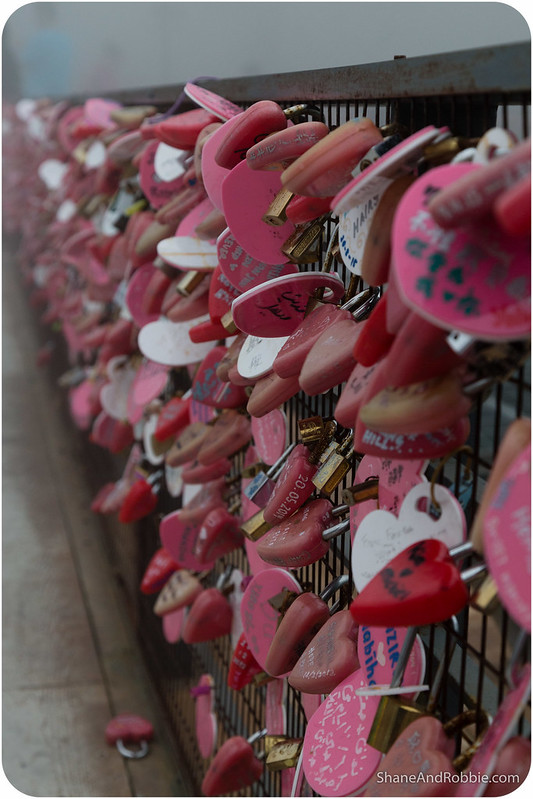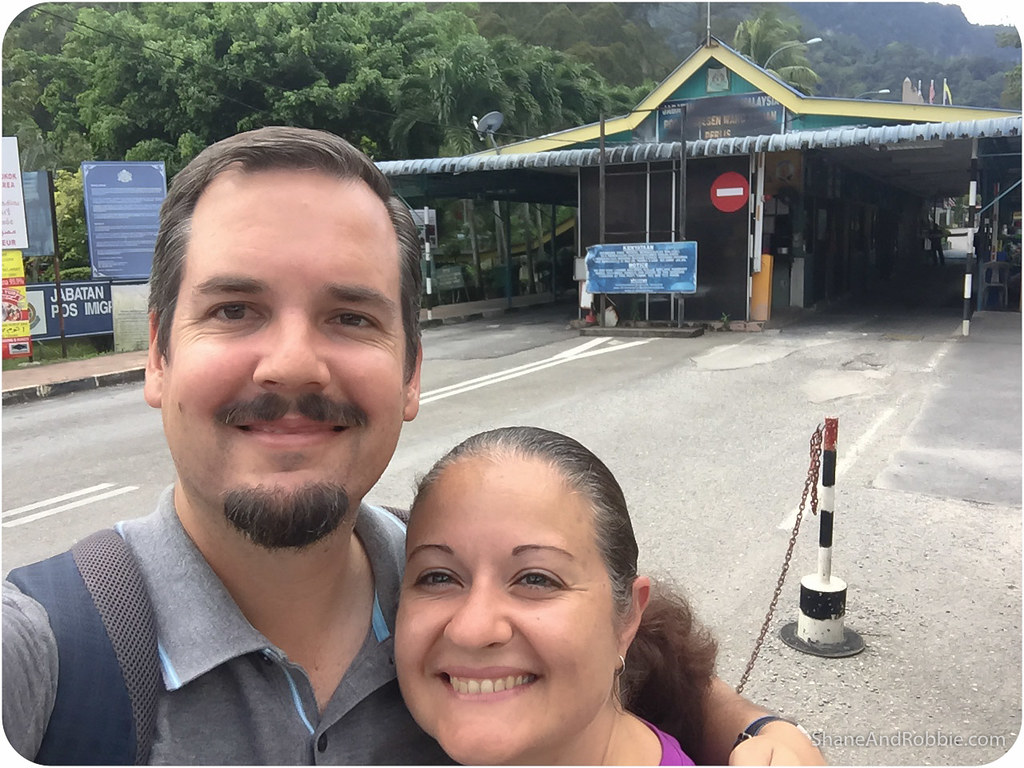SALAM DATANG DI MALAYSIA!
After 10 hours of transit we finally made it to Penang, our first stop here in Malaysia! This is our penultimate country for this trip (we fly home from Singapore just before Christmas), and so far Malaysia is proving to be green, tasty, and very very wet.
We set off from Ao Nang (Thailand) early this morning, bound for Wang Prachan and the Thai/Malay border. It took about 5 hours to drive the 300km to the border; the road along the way was pretty good with just the usual quota of lumps and bumps to contend with. The scenery was typical of Southern Thailand: green, jungly, and hilly with lots of rubber plantations and rural villages.
As we approached the tiny border town of Wang Prachan the terrain became much steeper, with the border sitting right along the spine of the Pearlis Mountain range. The border itself was very quiet and within 15 minutes we’d been stamped out of Thailand and stamped into Malaysia – seems this isn’t a very popular overland border crossing!
Just on the other side of the border we stopped in the Malay town of Kaki Bukit for lunch and a stretch. Malaysia is the 50th country we’ve been to* and so far, so good. We could tell straight away that Malaysia is more developed and wealthier than Thailand – the roads are better, the cars newer, and the homes and businesses better constructed.
*The list so far: Australia, New Zealand, Italy, New Caledonia, Fiji, Vanuatu, Cook Islands, Indonesia, Singapore, Japan, Korea, Russia, Finland, Sweden, Norway, Denmark, Iceland, Germany, Switzerland, Austria, Liechtenstein, Slovakia, Czech Republic, Hungary, Poland, Romania, Bulgaria, Turkey, Egypt, Morocco, Kenya, Tanzania, China, England, Wales, Scotland, Republic of Ireland, Netherlands, Belgium, Luxembourg, France, Monaco, Andorra, Spain, Portugal, Thailand, Laos, Cambodia, and Vietnam. And there are so many more to go!!
Malaysia is a constitutional monarchy made up of 13 states spread across the Malaysia Peninsula and the Malaysian part of Borneo. Before being united under British colonial rule in the 18th century, each of the 13 states was an independent kingdom ruled by a sultan*. Not only did the British unite the Malay states, they also opened the region up to Indian and Chinese settlers from their other colonies, thereby ensuring that Malaysia would forever more be a multi-ethnic, multi-cultural society. Today about 60% of the nation’s population of 30 million is indigenous Malay; 25% are Chinese-Malay; and 10% are Indian-Malay. The nation’s official religion is Islam, but the constitution allows for freedom of religion so Buddhism, Taoism, and Hinduism are all commonly practiced as well. From what we’ve seen so far this makes for a fascinating mix of cultures and some fantastic food!
*The sultanate model of governance was brought to Malaysia along with Islam in the 15th century by Indian and Arabic traders.
Malaysia became an independent state in 1963 and, since its independence, has had one of the best economic records in Asia, with its GDP growing at an average of 6.5% per annum for almost 50 years. The country has a wealth of natural resources (including fossil fuels which the government-owned Petronas* company controls), and expanding tourism, manufacturing, and science/technology sectors. Certainly compared to other South East Asian nations we’ve visited, Malaysia is quite obviously far more affluent. The scenery and environment remains typical of the region though – lush, green, hilly, and oh so very very hot and humid!
*To give you an idea as to why Malaysia is so much more developed than its neighbours: Petronas is a Fortune 500 company and is ranked as the 12th most profitable company in the world.
We read all about Malaysia on our 5 hour drive from the Thai/Malay border to Penang. Finally, at around 5:30pm, we arrived at our hotel in Georgetown, capital of Penang and our home-away-from-home for the next few days. After the relative quiet of Southern Thailand, the high-rises and traffic of Georgetown was a bit of a shock. But wow – what a city!
Highly urbanised and industrialised, Penang is one of the most developed and economically important states in Malaysia, as well as a thriving tourist destination. Tourists like us flock here to enjoy the UNESCO-listed colonial architecture of the state capital, Georgetown; as well as to sample the glorious food Penang is famous for. In Penang the best of Malay, Chinese, Indian, Thai, and Burmese flavours have come together and created a food scene that is both unique and delectable – as we found out during our evening stroll through a local hawker street food market.
There were stalls selling noodles, spicy curries, tandoori chicken, fresh seafood, and all manner of other dishes we didn’t even recognise. Our picks for the night: chee cheong fun (a rice noodle dish served with a sweetish brown sauce and sesame seeds), and Penang curry laksa (the local version of our favourite spicy noodle soup, served with seafood and a good dose of coconut milk).
We also caught the funicular up Penang Hill to catch an aerial view of the city. Unfortunately for us we got to the top of the hill just in time to see this…
Rising 833m above the city of Georgetown, Penang Hill was once a cool, mosquito-free retreat for British ex-pats during the colonial era. Now it’s a family playground complete with cafés, restaurants, and a special balcony where loved-up couples can go to declare their ever-lasting commitment to each other (by buying a special heart-shaped padlock and attaching it to the prescribed fence).
It’s all a bit naff and touristy, but still made for an interesting stop, especially as it cleared just enough at one point for us to catch a glimpse of the city below.
Given how late it was when we arrived in Penang we didn’t get any time to see any more of Georgetown, but tomorrow we’re going to explore as much of it as we can. So join us then for more tasty adventures from Malaysia’s culinary capital!
Categories: Malaysia
